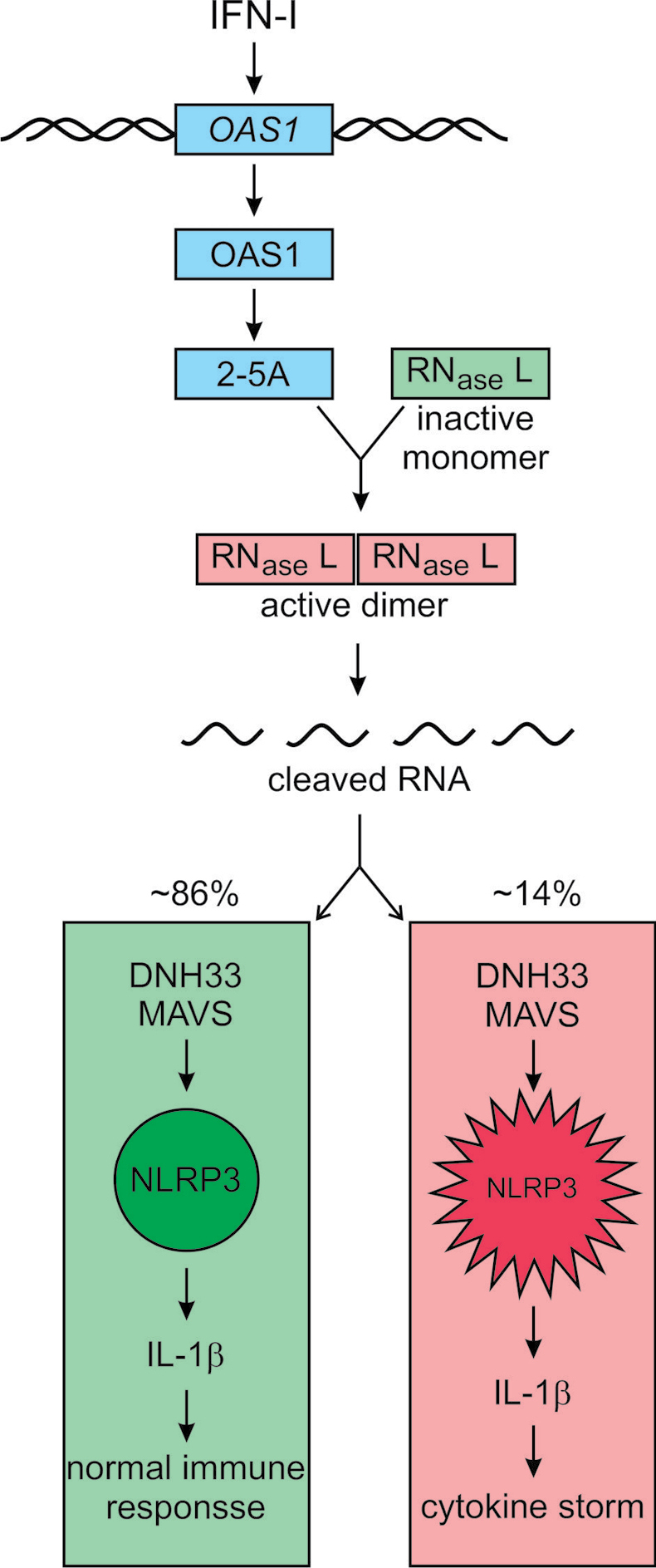
|
||
|
The OAS–RNase L pathway and the NLRP3 inflammasome activation. DsRNAs and IFN signaling activate the OAS gene. OAS1 induces the synthesis of the second messenger 2–5A from ATP. 2–5A then binds and transform the RNase L monomer to its active dimer formation. The active RNase L degrades viral RNA, thus inhibiting virus replication. Cleaved RNA, through DHX33 (DEAH-box helicase 33), which binds to cytosolic RNAs and interacts with MAVS (Mitochondrial Antiviral Signaling protein), can activate NLRP3 inflammasome. In most cases, this stimulates the normal anti-viral response, but theoretically, further stimulation of the already hyperactivated NLRP3 inflammasome would intensify the CS. |